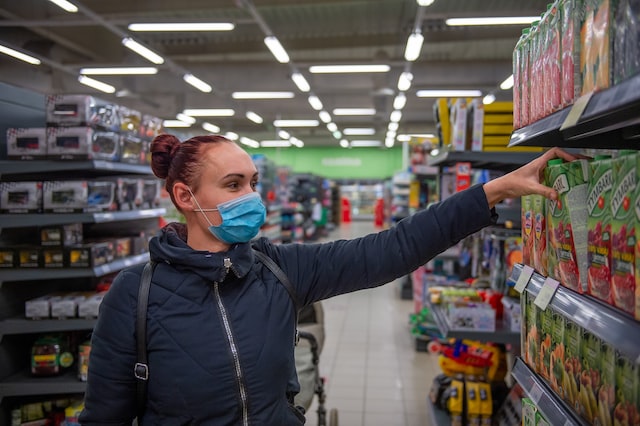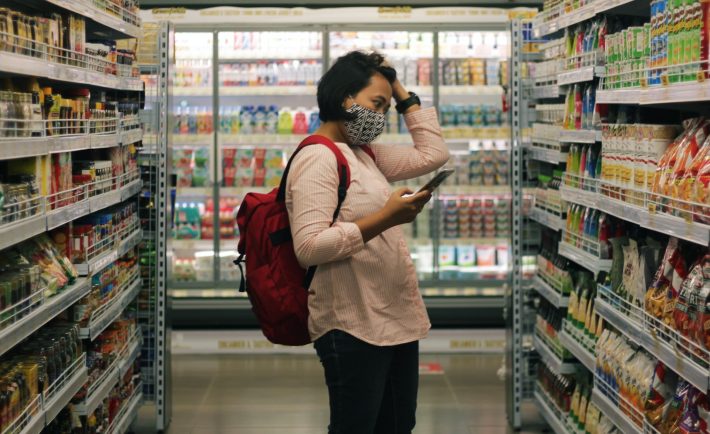Championing your grocery runs takes experience and skill. As a young adult, you may encounter challenges and make shopping mistakes along the way. As you become more experienced, you will be able to pick the right items while trying to save money.
From buying only name-brand products to buying fruits that are out of season, here are some supermarket mistakes that are slimming your wallet.
#1: YOU ONLY GET NAME-BRAND PRODUCTS
Say you enter the halls of the grocery and find countless options in the aisles. Keep your eyes peeled on the products in the topmost or lower shelves. These shelves often stock up on generic or store-exclusive products. You can get similar-quality products for a fraction of the price when you do not snob these generic products. Brand does not always equate to quality.
#2: YOU DO NOT CHECK THE PRICE PER KILO
When you are buying fresh produce, a good indicator of value for money is the price per kilo on its label. Do not always presume that loose produce is the best option. Sometimes, packed fruits and vegetables are cheaper. Get the best deal every time you shop by getting into the habit of comparing loose produce to different packaging sizes.
#3: YOU OFTEN BUY THINGS THAT ARE OUT OF SEASON
Various vegetables and fruits are less available during certain times of the year. The shortage of supply influenced by the high demand hikes up the price in the supermarkets. When this happens, you will be paying more. Keep track of what is in and out of season through helpful charts. Not only will the produce be tastier, but it will be cheaper too!
For instance, blueberries can cost up to S$10 when it is off-season compared to the price of around S$5 when they are in season. During the off-season, you can look for canned substitutes such as peaches and pineapples.
#4: YOU TEND TO IGNORE THE SELL-BY DATE
Do not pick up the first packet of meat you see, as tired as you might be. Inspect the food first, before leaving the store. Visible brown spots are telltale signs that the meat is about to go bad. Check the sell-by date too. You do not want to waste your money on meat that is about to reach the end of its shelf life.
#5: YOU IGNORE THE FREE SERVICES
Did you know that some supermarkets provide free services such as descaling and filleting? If you are a newbie cook or you just do not have a good handle on fish, it is best to take advantage of the free services offered at the supermarket. Otherwise, you will ruin a good fish.
#6: YOU GO TO THE STORE WITHOUT A LIST
Making a meal plan for the week will help you reduce your waste and encourage more savings. Make a list before you visit the nearest supermarket. Remember to check what is available in your own home too before you start planning what you are going to bring home.
#7: YOU BOUGHT MEAT FIRST
The longer the amount of time your meat spends in room temperature, the higher the chances of bacteria growing on it. When there are more bacteria on the meat, its lifespan becomes shorter, even if it is kept in the fridge. So, if you have an extensive list of items to grab, let meat be the last item before heading to the cashier.
#8: YOU SKIP PRODUCE WITH SPECKS OR SPOTS
The appearance of fresh produce is often manipulated by manufacturers to make it look more attractive to consumers. When fresh produce looks unnaturally spotless, it is usually because of the wax or pesticides that make them look fresh and shiny. Avoid these chemicals by embracing fruits and vegetables with natural spots or specks.
#9: YOU FORGET ABOUT THE DIFFERENCES IN PACKAGE SIZING
Many people go through the supermarket aisles and only look at the prices. While it is an excellent idea to pay attention to the price tag, you should also consider the size of the products that you are purchasing.
While one item on the shelf may be cheaper, due to packaging, you may get less product on a similar item that only costs a few cents more. When you are aware of the package price and size, you can make a more informed decision. Spend more money on things that will actually last longer.
#10: YOU TEND TO BUY THINGS THAT GO BAD QUICKLY IN BULK
Coming inside the grocery store with a list in hand does not always end up the way you want it to. Even experienced grocery shoppers buy too much of what they need. When it concerns highly perishable goods (e.g., strawberries, broccoli, and spinach), buying in bulk often results in food wastage. Items tend to go bad before we have a chance to consume them.
Although it is tempting to buy more than what you need to get the sweet deal of 10 for S$10, avoid unnecessary spending and stress. This does not apply to parents who have a huge family with many mouths to feed.
#11: YOU DISREGARD THE COST PER UNIT
Cost per kilo and cost per unit are important in making informed decisions. When we think of bundles, we usually associate getting more items for an affordable price. However, this is not always the case! Compare bundles with standalone items to get your money’s worth.
For instance, you are buying cartons of juice.

Image Credits: unsplash.com
2 cartons of 275ml juice cost S$5, which totals to about S$0.009/ml
1 carton of 500ml juice costs S$3.50, which totals to about $0.007/ml
The difference between these prices may seem minute, but it can affect your savings in the long run. Remember to check the price of the item versus its quantity. Additionally, you have to compare the prices across the available brands. These steps may take time, but your wallet will surely thank you later.

